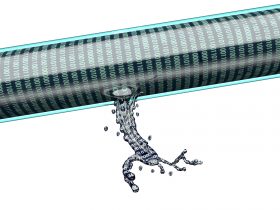Translation processes do not start with the content transfer from one language to another. They start with the process of creating the source text. This source text will have a crucial impact on the later result. One tiny difference as the one between “Real Time Protection”, “Real-Time Protection” and “real time protection” can lead to multiple differences in the target text.
Let’s have a look at a really simple example, the word “email”; and one of our target languages, for example; French. “Email” has an official translation inside Avira’s terminology: “e-mail”. If the source text contains a tiny variation such as “e-mail” or “mail”, the terminology software will fail to find the term. Therefore, the end result might vary from “e-mail” to “adresse électronique”, “messagerie” or “messagerie électronique”. The difference, in this case, doesn’t seem that crucial. Anyway, all of them are synonyms, right? But when the difference affects a product name or a feature name the problem starts to grow bigger.
At Avira we also have examples of these problems with feature names. “Remote Yell”, “Remote Alarm”, “Trigger Scream” and “Remote Scream” are used as names for the same feature. This usually leads to even more different translations, which confuse the user.
Of course, consistency problems do not end in the source text, they are also important to solve in the target content. It is important to adapt the terms to the target culture and accomplish a consistent language within it. This way the user will feel the message as if it was originally written in the target language.
Why value linguistic consistency?
Linguistic consistency prevents users from finding poorly written or unintentionally humorous content.
Tweet
On the other hand, linguistic inconsistency—for example, at the company’s webpage—can give the impression that the company does not value its customers or the market it is addressing to. Regarding software localization, consistency helps to have a user friendly interface, where it is clear what the program is referring to.
Linguistic consistency saves us time. New translations always take time and effort. Even a three words translation can take up to one working day. Sometimes, similar sentences already exist inside the company’s TM, so why not use them? Linguistic consistency also saves us money, as simple as the fact that using a previous translation prevents from spending on new ones.
From the user interface, to the documentation, the social media, the customer support to the marketing texts, a company needs to address to concepts in a clear and consistent way. Just imagine for a second one of our era giants wouldn’t care so much about this subject. We will be still trying to differentiate “G Earth” from “G Land”, “G Globe” and “G World”. Seems like the perfect nightmare material.











